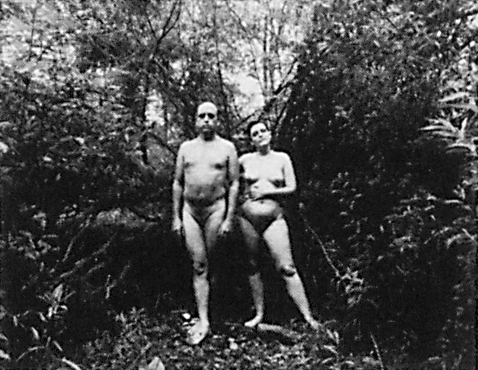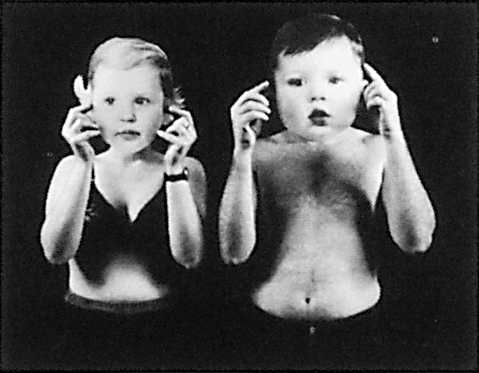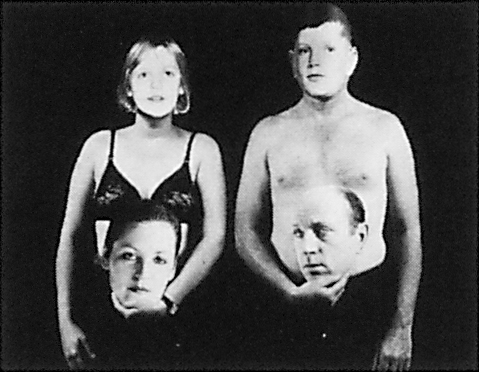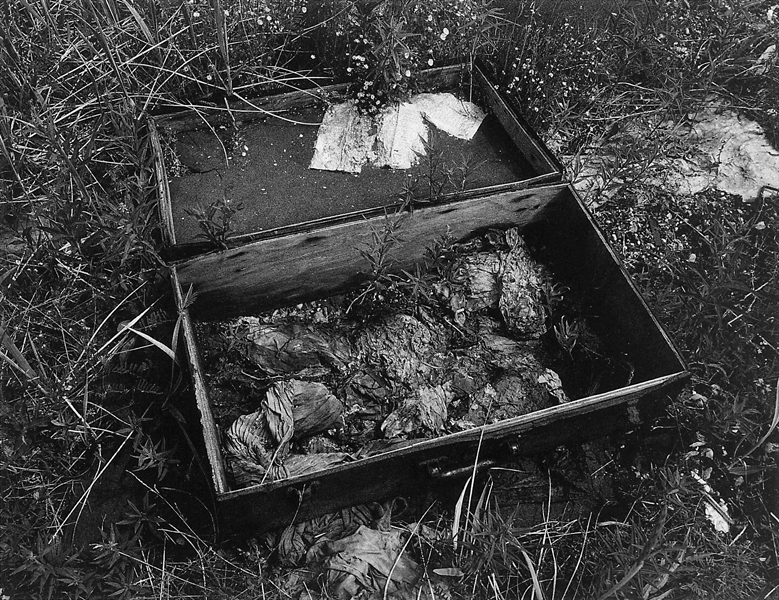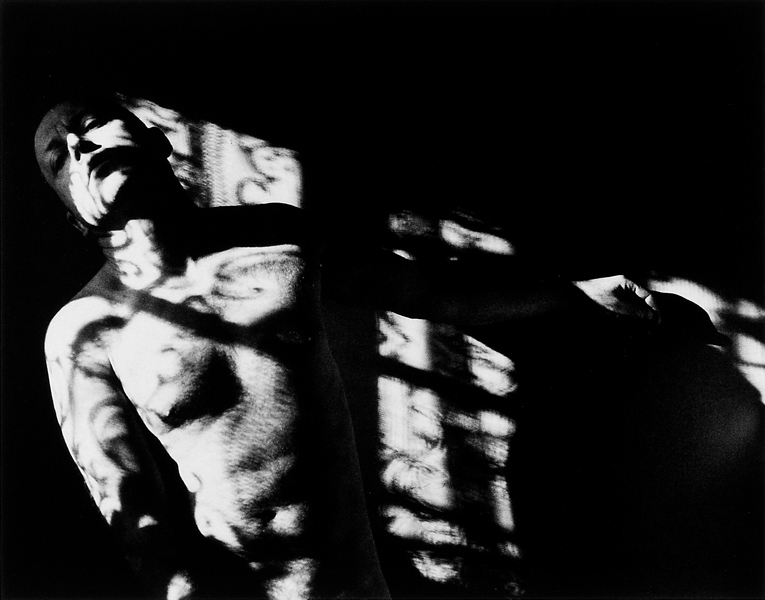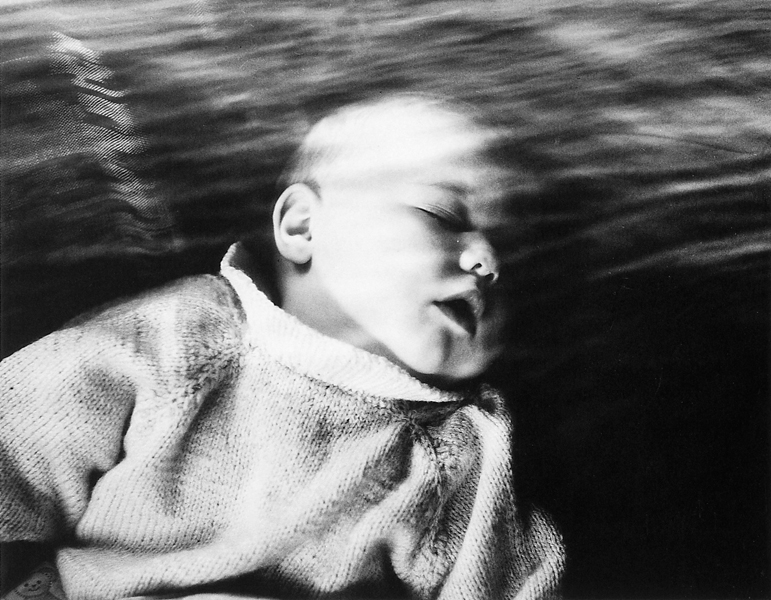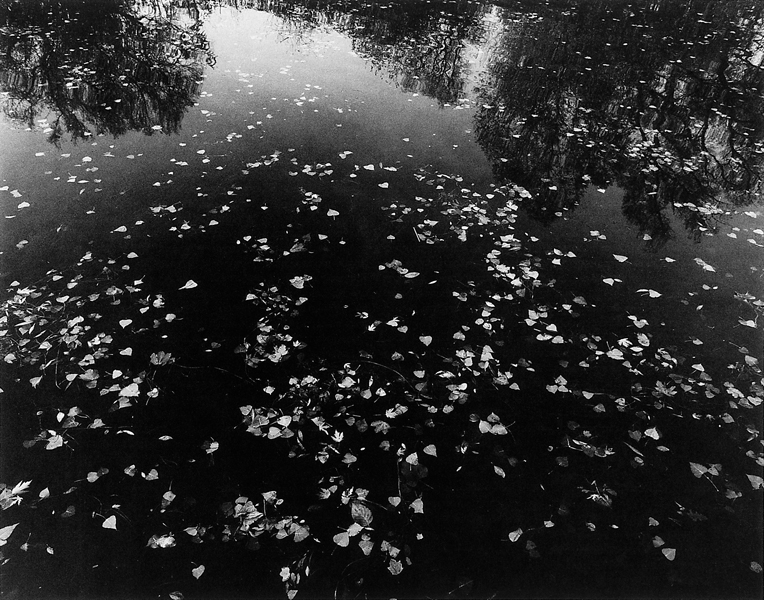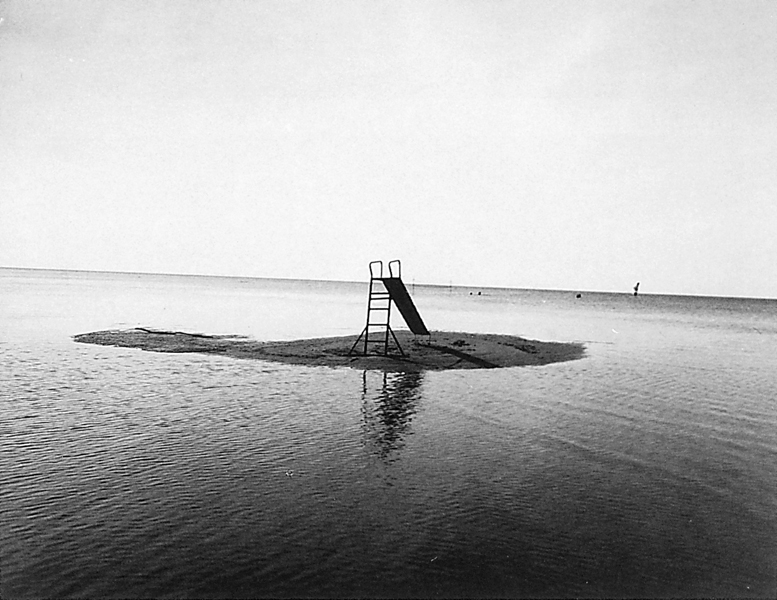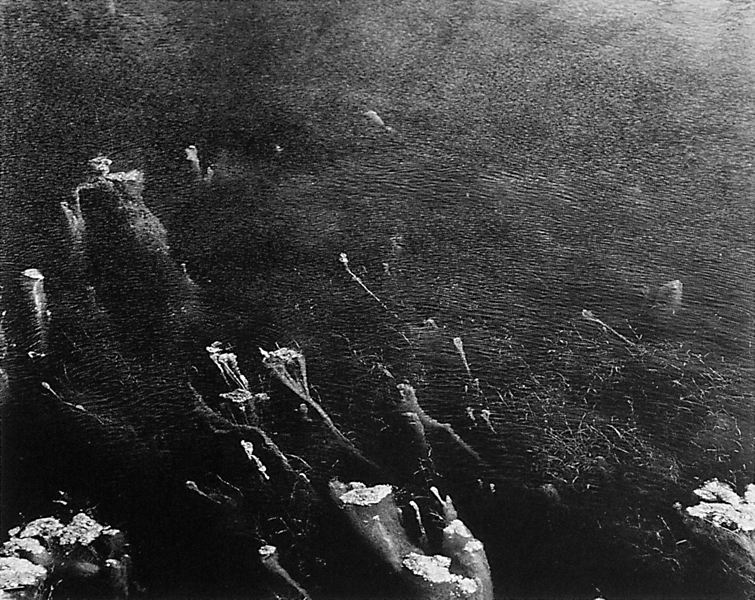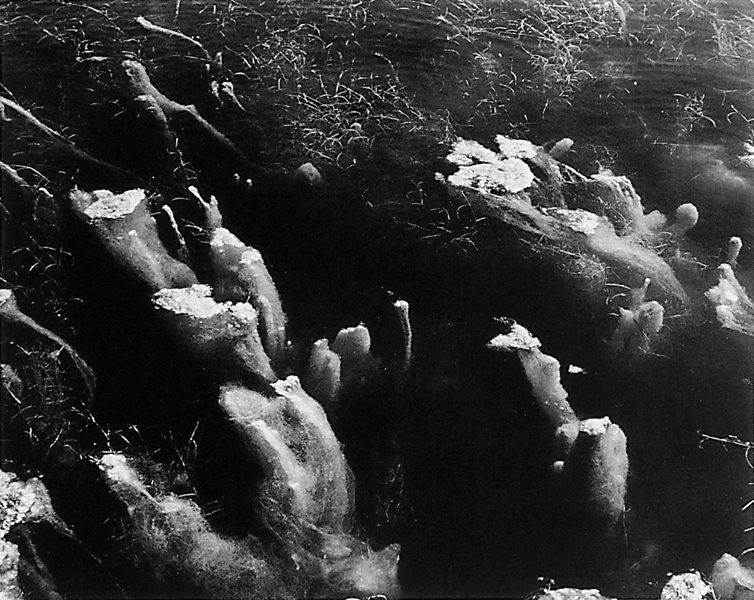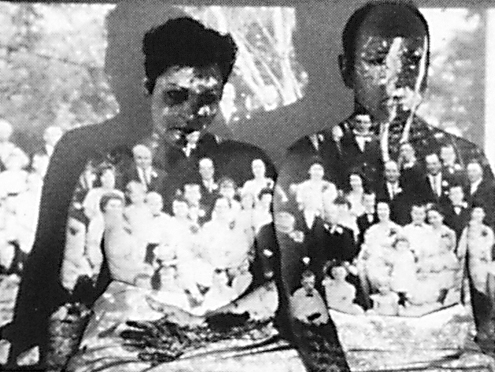[Spring 1994]
by Janette Platana
Schlichting’s Embarkation expresses the rough pleasure of existing in the sensual world, of loving its minute details. This work suggests captivation by close scrutiny, and the images are the result of suspended disbelief, an agreement to shift viewpoint and scale, so that a cobweb can become impenetrable as a cage, comforting as a blanket, embracing as a shroud. The shift recreates a world seen from the viewpoint of perhaps an insect or a fish, of nature from within nature; or from the position of a child, with innocence, fascination and sense of the overwhelming bigness of life.
Childhood is a strong presence in this work (only a portion of wich is shown here); more precisely, Embarkation illustrates the journey of childhood.
Wrenching images from an uprooted resettlement village in Manitoba begin a journey of expulsion, but the images that follow make it clear that the artist is aware that, while some of us are cast out of home, many of us are cast out toward home. The self-potraits in Embarkation suggest the sense of rootlessness or exile that some people are born with, and that finding a home is a blessing that comes after sacrifice.
Still, there is an ambiguity to many of the images which questions the success of the sacrifice. A human figure floats just below the water’s surface. Its gender is not easily identified. It is difficult to discern whether the figure is face-up or face-down. It may be rising, or about to sink for the last time. We cannot tell if this is an arrival or a departure.
But anchoring this watery journey are images and echoes of islands, and these photos imbue the work with hope: resettlement after exile can be hoped for.
The dream is, after all, a shadow of something real.
It was a must for me to publish some photos from Leonard Schlichting’s My Sister, Myself portfolio. This work, presented in the fall of 1990 at Toronto’s Gallery 44 (Ontario) and at Chicoutimi’s Galerie Séquence (Québec), is particularly interesting conceptually as well as visually. It is also bright and well articulated. I am reprinting the text Schlichting wrote for a publication prepared for Gallery 44 on this occasion, hoping you will appreciate as I do, the work of this photographer.
⎯ Robert. Legendre.
My Sister, Myself
At sixteen I ran across a field of freshly cut grain to tell my father there was a new baby girl. Twenty-five years later she would call to tell me that our mother had died. My mother’s death focussed my attention on our family and on the need to strengthen the bonds in which time and distance had intervened. During the time after my mother’s death, I became reacquainted with my sister Lynette and discovered her to be a kindred spirit — a woman of warmth and creative energy. We decided to explore our mutual loss as well as the sometimes joyful bond that exists between siblings — what we share and where we differ. Our exploration would take the form of a performance with the camera as our only witness. It is often through photographs that we develop a sense of who we are and what we might become; I am a mask of my family. In a sense, the death of our mother is the death of the family — the death of our security. The image remains but the voice that comforts is silent.
⎯ Leonard Schlichting, June 1990
Leonard Schlichting lives and works in Toronto. He is an active member of Gallery 44, and was president of the board of directors of the Floating Gallery in Winnipeg. He is a recipient of several grants, and his work has enjoyed wide exposure in Canada since 1976.
Janette Platana is writer of fiction and non-fiction living in Toronto, where she works at Gallery 44 Centre for Contemporary Photography. She is collaborating on a bookworic of photographs and poetry with artist April Hickox, to be published by Galerie VU in 1994.

